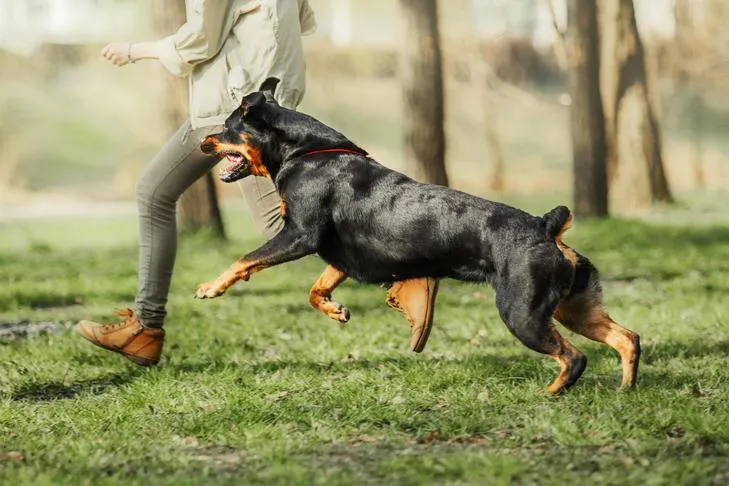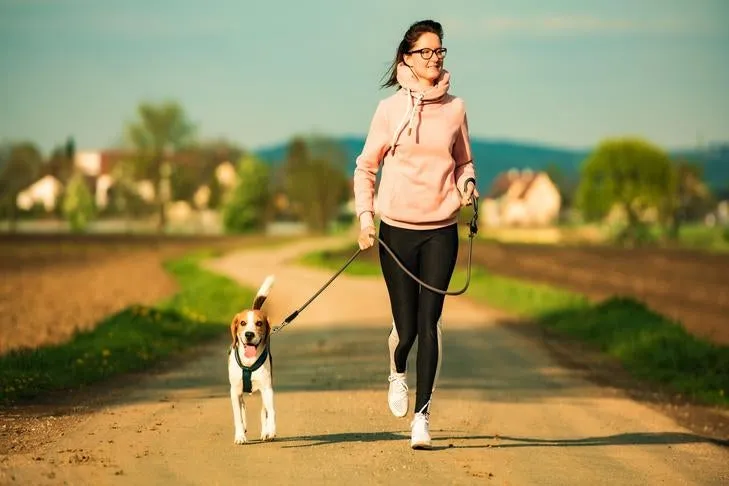Jogging with your canine companion is a fantastic way to strengthen your bond, keep both of you physically fit, and boost motivation. Establishing a consistent exercise routine is crucial for a dog’s overall health and well-being. If you’re wondering how to teach your dog to jog with you, this guide will walk you through the essential steps, from assessing their readiness to ensuring safe and enjoyable runs. As you embark on this journey, remember that foundational training for younger dogs, such as learning the best way to potty train a puppy, lays the groundwork for all future learning and positive experiences.
Is Your Dog Ready to Run? Breed, Age, and Health Considerations
Before you begin training your dog to be your jogging partner, it’s vital to determine if they are physically suited for the activity. Not all breeds are built for long-distance running, and a veterinarian check-up is a non-negotiable first step. Generally, running is not safe for puppies because their bones are still developing. For most breeds, it’s advisable to wait until your dog is at least 1.5 years old to protect their growing joints and skeletal structure from potential damage.
Even within breeds known for their endurance, individual dogs have unique temperaments and physical capabilities. Some dogs will naturally take to running with enthusiasm, while others might prefer a more leisurely pace. Research your dog’s specific breed characteristics and consult your veterinarian for a thorough physical examination. Your vet can provide tailored advice, identify any underlying health conditions, and confirm that jogging is a safe activity for your furry friend.
 Woman jogging with her German Shorthaired Pointer on a paved path.
Woman jogging with her German Shorthaired Pointer on a paved path.
Mastering Loose-Leash Walking: The Foundation of Jogging Together
The cornerstone of teaching your dog to jog with you is mastering loose-leash walking. A dog that pulls on the leash during a walk is not only frustrating but can become a serious safety hazard when you increase your speed. The key to success is consistent, positive reinforcement. Remember that the outdoor environment is full of distractions like interesting smells and squirrels. To keep your dog focused and by your side, you need to be equally rewarding.
Utilize high-value treats, favorite toys, and enthusiastic praise to reinforce your dog whenever they maintain a slack leash, ideally forming a “J” shape. It’s crucial that your dog learns to consistently stay on one side of you. If they run ahead, lag behind, or weave from side to side, it could lead to you tripping or getting tangled in the leash. Choose a side (left or right) and stick with it. Start this training at a walking pace, always delivering rewards in the desired position – for example, if you want them on your left, only offer treats near your left leg. Once they’ve mastered one side, you can teach them to walk on the other with a distinct cue. Beyond jogging, a well-behaved dog that doesn’t jump on people is a joy, and learning how to keep a puppy from jumping on people is another vital aspect of early training. Many runners find hands-free leashes beneficial for better control and comfort.
Introducing Speed Cues and Pace Control
Once your dog reliably walks politely at your side, you’re ready to introduce speed. Just as you have a cue like “let’s go” for regular walking, establish a distinct cue for jogging, such as “get running” or “move it.” The more clear information you provide, the better your dog will understand your expectations.
To teach the running cue, begin by incorporating short bursts of jogging into your usual walks. Give your chosen jogging cue immediately before you accelerate, and then reward your dog generously as they quicken their pace to match yours. Similarly, teach a deceleration cue like “whoa” or “easy” to signal when you’re slowing down. This clear communication helps your dog anticipate changes in speed and respond appropriately, making your jogging sessions smoother and safer for both of you.
 Happy Rottweiler running off-leash in a park, engaging in play with its owner.
Happy Rottweiler running off-leash in a park, engaging in play with its owner.
Building Your Dog’s Jogging Endurance Safely
With your dog understanding side preference and speed cues, the next step in How To Teach Dog To Jog With You is building their endurance. Just like humans, dogs need to gradually build strength and stamina to avoid injury and overexertion. Start by adding very small stretches of running into your daily walks.
On subsequent walks, progressively increase the duration of your running intervals and decrease the walking portions. This systematic approach allows your dog’s muscles, joints, and cardiovascular system to adapt to the new demands. Over several weeks, your dog will be conditioned to comfortably jog for longer distances. Always incorporate a short warm-up walk before you start running and a cool-down walk afterward to prepare and recover their muscles.
Essential Tips for a Safe and Enjoyable Jogging Experience
Even a well-trained and conditioned dog requires thoughtful consideration to ensure their safety and enjoyment while jogging.
- Monitor Weather Conditions: Dogs don’t regulate body temperature as efficiently as humans. Avoid jogging in extreme heat, humidity, or very cold temperatures, as this can lead to heatstroke or hypothermia.
- Hydration is Key: Always carry water for both yourself and your dog. Offer them frequent water breaks, especially on longer runs or warmer days.
- Take Breaks: Allow your dog frequent opportunities to rest, relieve themselves, and explore their surroundings. These breaks help them recharge and prevent burnout.
- Off-Leash Safety: Only allow your dog to run off-leash in designated, safe, and legal areas. Crucially, they must have a highly reliable recall, even amidst significant distractions.
- Read Your Dog’s Signals: Pay close attention to your dog’s body language. Signs like excessive panting, lagging behind, limping, or seeking shade indicate they’ve had enough. Dogs often try to please their owners, so they might push themselves even when tired or uncomfortable. Prioritize their well-being over your running goals.
 Beagle running beside its owner on a leash during an outdoor jog.
Beagle running beside its owner on a leash during an outdoor jog.
Indoor Alternatives for Extreme Weather Training
Dedicated joggers may brave all weather, but sometimes conditions are simply too extreme for your dog. On such days, maintaining their physical conditioning indoors is essential. Depending on your dog’s size, a spirited game of fetch down a long hallway or up and down a carpeted staircase can provide a good cardio workout and engage their muscles. You can also create a simple obstacle course using household items like hula hoops or cardboard boxes. Many training facilities also offer indoor classes, including basic agility training for dogs, which will get your dog running, jumping, and mentally stimulated.
For a more structured indoor workout, many dogs can be trained to use a treadmill. While some treadmills are designed specifically for dogs, a human treadmill can work if the length is appropriate for your dog’s size. Research proper treadmill training techniques or consult a professional dog trainer to ensure your dog learns to use the machine safely and enjoyably. Never tie your dog to the treadmill, and always supervise them closely during their workout. While you might need to adjust your jogging routine in harsh conditions, understanding how to potty train a puppy when it’s cold outside also ensures their comfort and health year-round, regardless of their age.
Becoming a jogging duo is a rewarding experience that deepens your bond and keeps you both active. By patiently following these steps on how to teach your dog to jog with you, from initial readiness assessments to mastering pace control and prioritizing safety, you’ll build a strong foundation for many happy miles together. Enjoy the journey and the countless benefits of sharing the open road with your best friend!
